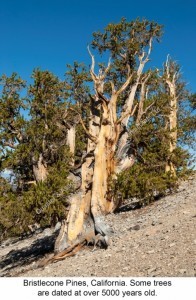Our Philosophy
 Trees are truly incredible plants. They grow in the most incredible places, under the most inhospitable conditions imaginable. Trees are an integral part of past and present civilizations, not only as a source of materials, but also in religion and mythology; the Cedars of Lebanon and Humbaba, Dryads, Druids, Celts, Yggdrasil, the Banyon, Peepal, or the Bodhi tree are examples. Amazingly, some trees alive today germinated three or four thousand years ago. Imagine the history they have witnessed.
Trees are truly incredible plants. They grow in the most incredible places, under the most inhospitable conditions imaginable. Trees are an integral part of past and present civilizations, not only as a source of materials, but also in religion and mythology; the Cedars of Lebanon and Humbaba, Dryads, Druids, Celts, Yggdrasil, the Banyon, Peepal, or the Bodhi tree are examples. Amazingly, some trees alive today germinated three or four thousand years ago. Imagine the history they have witnessed.
For over thirty years I have been fortunate and very privileged to work all over the world, and meet many trees in many places. Four thousand year old Alerce in Chile, Nothofagus at the southernmost tip of Patagonia, the ancient Bristlecone pines and massive Redwoods in California, huge Douglas-firs, hemlocks, and spruces in the Pacific Northwest, ancient trees high on mountain tops in the Daoist monasteries of China, revered Banyans in Asia and the Orient, dwarf trees far beyond the arctic circle in Canada and Scandinavia, Cycads in Australia, and all sorts of other trees in countless places in between.
As a professional forester, arborist, and planner I have successfully lobbied for tree retention and park creation; I have advocated for alternative land use designs, and have worked to retain individual trees on development sites. But I temper my love of trees with pragmatism. Not all trees are in the right place at the right time. Not all trees can be retained for ever. I have cut them down and used them for lumber, firewood, carving, turning, and furniture – I enjoy working with wood. And, I have planted and nurtured trees in forests, gardens, developed landscapes, and streets, and watched them grow.
In today’s busy world, and especially in urban areas, there are many demands on a finite land base. Some people want to retain trees for all sorts of reasons, such as beauty, shade, habitat, or screening. But not everyone likes trees, often for equally valid reasons. They grow large and block views, and sunlight. Sometimes they are in the way of development proposals, or have roots that damage infrastructure. Some trees develop structural weaknesses that drastically increase the likelihood of failure and the associated damage that will result. As an expert in tree risk assessment, I know all too well that there are times when the best solution is to remove the tree, no matter how much emotion is attached to it. But there are other times when a well reasoned scientific investigation and analysis can reveal management options other than removal. Each case has its own specific attributes.
My goal is to help you come up with a good solution for your trees and timber structures. In some cases I may recommend removal as the best option. In other cases I will explain why and how trees and timber structures can be retained, and will help you to accomplish that, so that the benefits can continue. In my risk assessments, and as an expert witness I strive to be impartial. I will give you my best professional opinion based on the facts of each individual case. No matter how large or how small your project, if it involves trees, timber structures, or land use planning with a tree component I will be interested. Call me and let’s see how I can help you.
